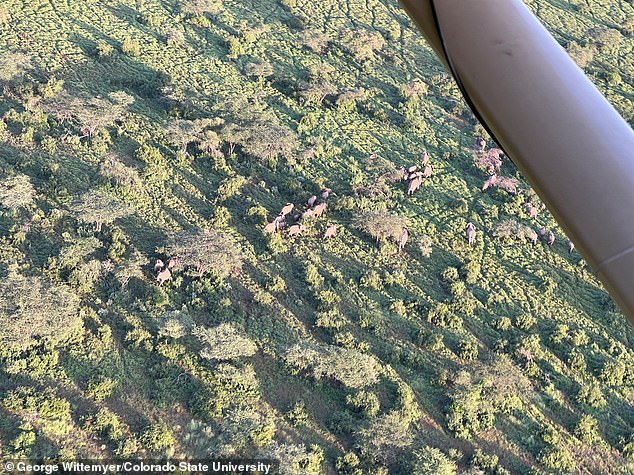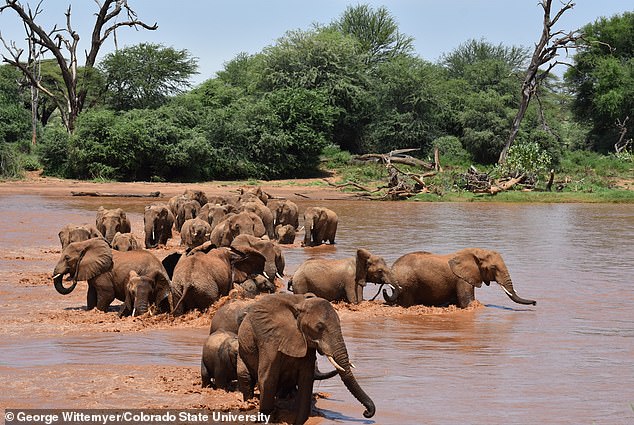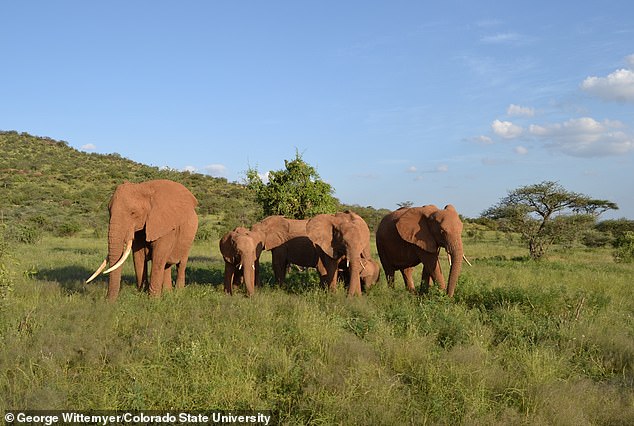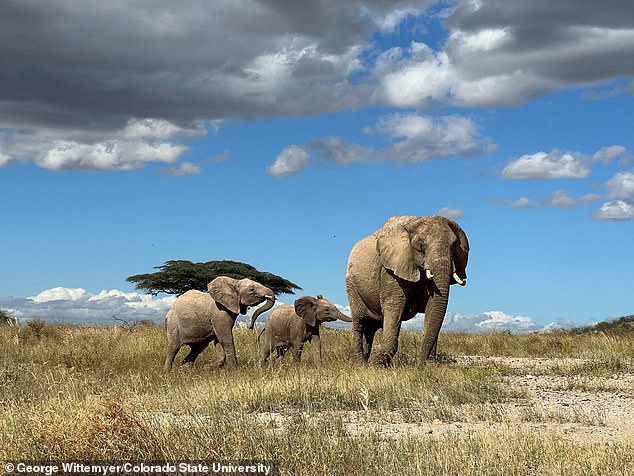The African elephant is heading towards extinction: forest populations have declined by 90% in the past 50 years, study warns
They are the largest animals to walk the planet and possess remarkable levels of human-like intelligence and emotional awareness.
But scientists warn that African elephants – which roam 37 countries across the vast continent – are at risk of extinction.
A new study, led by wildlife experts from Colorado State University in the US, analyzed 53 years of elephant research data dating back to the 1960s.
Large-scale declines were observed in both species of African elephants: the African forest elephant (L. cyclotis) and the larger African forest elephant (L. africana).
In just over half a century, forest elephant populations have declined by an average of 90 percent, while savanna elephant populations have declined by 70 percent.
Combined, the population fell by an average of 77 percent
And the reasons for plummeting populations are largely man-made – namely poaching, retaliatory killings for crop plunder and habitat fragmentation.
Tragically, males are still targeted by trophy hunters and ivory traders for their valuable tusks.
An elephant family comforts their calf during an afternoon nap under a tree in the Samburu National Reserve, Kenya

In the photo, savannah elephants are being examined by spotters on planes. The new study – described as the most comprehensive assessment of African elephants to date – found a large-scale decline in African elephant numbers
Study author George Wittemyer, a professor in Colorado State University’s wildlife department, said “the overall story is one of decline” — even as herds have grown stronger in some places.
“This paper shows the scale of the decline and how widespread it is across the continent,” Professor Wittemyer said.
‘It sheds light on how quickly even something as large and striking as elephants can simply disappear.’
It is estimated that there are 415,000 elephants in all of Africa, compared to perhaps 3 to 5 million a century ago.
The new research, published in Proceedings of the National Academy of Sciencescollected survey data from 475 sites in 37 African countries between 1964 and 2016.
According to the researchers, large-scale declines have occurred in most populations of both species over the past 53 years.
Of the 150 forest elephant sites, 140 have shown population declines since 1964, while 235 of the 325 savanna elephant sites have seen population declines.
In North Africa’s war-torn Sahel region, elephant populations have been ‘decimated’ overall as their habitats have been destroyed.

According to the Wildlife Conservation Society (WCS), the African savanna elephant is the largest land mammal in the world. An adult male African savannah elephant can grow up to 13 feet tall at the shoulder and weigh 14,000 pounds
East and Central Africa generally experienced a decline due to ivory poaching, but also due to human population growth and the conversion of their land into buildings.
“Elephants in the Democratic Republic of Congo have not been doing well recently,” Professor Wittemyer told MailOnline.
“Kenya, Sudan and even Tanzania have all lost elephants in East Africa.”
According to the WWF, wildlife authorities in Kenya kill between 50 and 120 problem elephants every year.
However, African elephant populations are not declining across the continent, the researchers found.
In some locations, elephant populations have even increased or remained stable.
Both species thrive in parts of southern Africa, especially Botswana, where populations are protected and sustainably managed.
Meanwhile, Benin’s Pendjari National Park is a rare example of the increase in forest elephant numbers in West Africa.

Unfortunately, African elephant populations have plummeted over the past century due to poaching, retaliatory killings for crop plunder, and habitat fragmentation. In the photo, an elephant family is foraging together during the rainy season

Pictured, a mother elephant leads her calf away from danger in northern Kenya, a country where elephant populations have been negatively affected
Unfortunately, elephants often cause anger among locals who share their land with the creatures, largely because they raid and destroy crops.
But as they are squeezed into smaller and smaller areas due to habitat encroachment, the crops are further threatened, making the situation even worse.
The study is described as the most ‘comprehensive assessment of African elephants to date’.
However, the researchers admit there are gaps in their data set, partly because it is still a major challenge to monitor elephant populations in Africa.
Currently, the most common survey technique for elephant populations in savannah environments is aerial surveys from manned aircraft.
But aerial survey observers can become exhausted, hampered by poor visibility and even succumb to bias and corruption.
Drones are not yet capable of the long flights over remote areas required to survey elephants, and processing drone images is expensive and resource-intensive.
To fill in the gaps, authors had to use places with good information to estimate population change for nearby places with less information, while looking at location-based trends to provide an overall picture.
According to the team, identifying regions where elephant populations have increased could help stakeholders enforce effective conservation actions.
“We can learn from the successes how we can better protect elephants throughout their range,” they say in their paper.
‘This work provides the most comprehensive assessment of the two African elephant species, illustrating the variability in their status between populations.’
